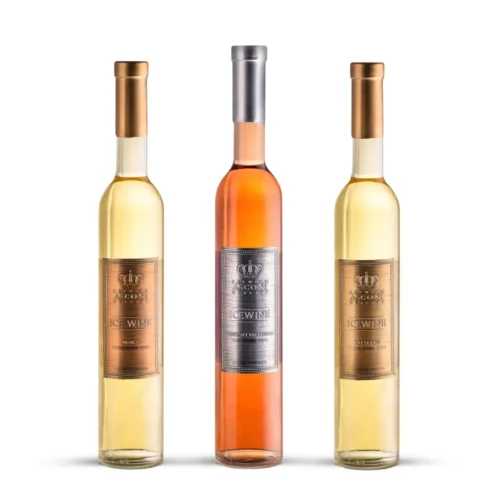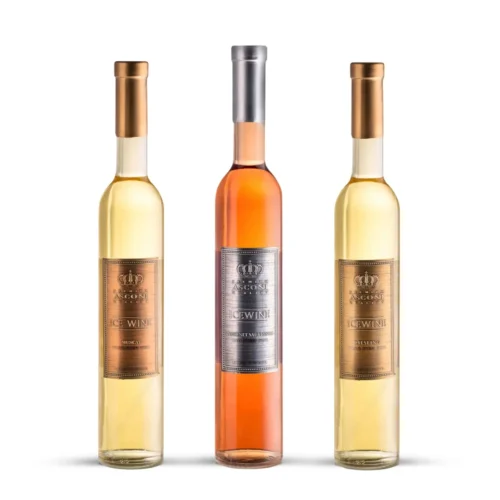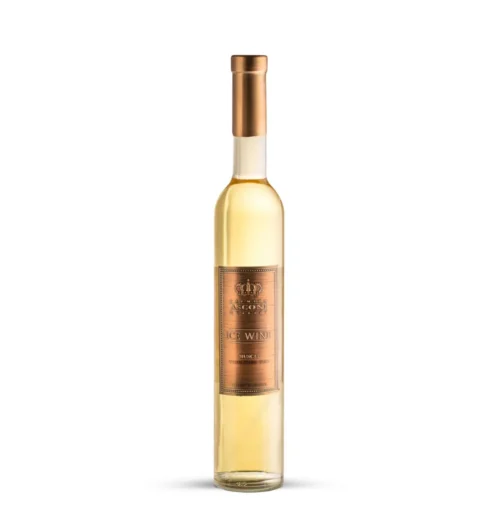Muscat Wine: Grape Varieties
Muscat grapes have a long and storied history dating back to ancient Greece and Rome. They are one of the oldest known grape varieties, celebrated for their versatility and distinctive flavour. The Muscat family includes over 200 grape varieties, each with unique characteristics that contribute to the diverse range of Muscat wines we enjoy today.
The most common Muscat grape varieties include Muscat Blanc à Petits Grains, Muscat of Alexandria and Muscat Ottonel. Muscat Blanc à Petits Grains is known for its rich and aromatic profile, while Muscat of Alexandria is often used for sweet and liqueur wines. Muscat Ottonel is popular in cooler climates and produces delicate, floral wines.
What is Muscat Wine?
Characteristics and Flavour Profile
Muscat wine is celebrated for its aromatic qualities. It often has floral notes reminiscent of orange blossom, rose, and elderflower, as well as tropical fruit flavours such as lychee, apricot, and peach. Depending on the variety and winemaking process, Muscat wines can range in colour from pale straw to deep golden hues and offer varying levels of sweetness, from dry to intensely sweet.
Muscat Wine Types
-Dry Muscat
Dry Muscat wines are crisp and refreshing, typically featuring bright acidity and a light, floral aroma. They are perfect for those who enjoy a less sweet wine but still want to savour the characteristic Muscat flavours.
-Sweet Muscat
Sweet Muscat wines are rich and luscious, often enjoyed as dessert wines. Their higher residual sugar levels enhance the intense fruit and floral notes, making them a delightful treat after a meal.
-Sparkling Muscat
Sparkling Muscat wines add a festive touch to any occasion. These effervescent and light wines have a delicate sweetness that pairs beautifully with a wide range of foods. They are ideal for celebrations or as a refreshing aperitif.
-Fortified Muscat
Fortified Muscat wines are fortified with spirits, increasing their alcohol content and preserving the sweetness of the grapes. These wines are robust and complex, often enjoyed as digestifs or paired with rich desserts.
Muscat Wine: Making Process
The winemaking process for Muscat wine varies depending on the style desired. Generally, the grapes are harvested and then crushed to extract the juice. For sweeter wines, fermentation may be stopped early to allow natural sugars to remain. Sparkling Muscat undergoes secondary fermentation to create bubbles, while fortified Muscat has spirits added.
Regions Known for Muscat Wine Production
Muscat wine is produced in several regions around the world, each contributing unique characteristics to the wine. Notable regions include France (especially in Alsace and the Rhône Valley), Italy (especially in Asti and Sicily), Australia (especially Rutherglen), and the United States (with significant production in California).
Muscat Wine: Food Pairing
-Cheese Pairings
For a sophisticated cheese platter, pair Muscat wine with soft, creamy cheeses like Brie or Camembert. The wine's floral and fruity notes complement the cheese's rich buttery flavours. Blue cheeses, such as Roquefort or Gorgonzola, also pair well with sweeter Muscat wines, balancing the cheese's sharpness with the wine's sweetness.
-Dessert Pairings
Muscat wine is a natural choice for dessert pairings. Sweet Muscat complements fruit-based desserts like tarts, pies, and sorbets, enhancing the fruit flavours and providing a refreshing contrast. Chocolate desserts, such as mousse or truffles, also pair beautifully with fortified Muscat wines, creating a decadent and harmonious combination.
-Main Course Pairings
While Muscat wine is often associated with desserts, it can also complement main courses. Dry Muscat pairs nicely with seafood dishes, such as grilled shrimp or scallops, where its bright acidity cuts through the richness. Sweet Muscat can enhance spicy Asian cuisine, balancing the heat with its sweetness.
-Vegetarian and Vegan Options
Vegetarian and vegan dishes can also benefit from Muscat wine pairings. A crisp, dry Muscat complements fresh salads with citrusy dressings, while sweet Muscat can elevate roasted vegetables or spicy tofu dishes. The wine's versatility ensures there's a perfect pairing for every plant-based meal.
Muscat Wine Serving
The serving temperature of Muscat wine can significantly impact its taste and aroma. Here are some guidelines for serving different types of Muscat wine:
-Dry Muscat
Serve dry Muscat wines chilled at around 50-55°F (10-13°C) to highlight their crisp acidity and vibrant flavours.
-Sweet Muscat
Sweet Muscat wines are best enjoyed slightly cooler, at around 45-50°F (7-10°C), to balance their sweetness and enhance their fruity and floral notes.
-Sparkling Muscat
Sparkling Muscat wines should be served well-chilled at around 40-45°F (4-7°C) to maintain their refreshing qualities.
-Fortified Muscat
Fortified Muscat wines can be served slightly warmer, at around 50-55°F (10-13°C), to appreciate their complex flavours and aromas fully.
Recommended Glass Types
Using the right glassware can enhance your Muscat wine experience. For dry and sweet Muscat wines, use a standard white wine glass with a narrow bowl to concentrate the flavours. Sparkling Muscat wines are best enjoyed in a flute or tulip-shaped glass to preserve the bubbles. Fortified Muscat wines can be served in a smaller, tulip-shaped glass to focus on the rich aromas and flavours.
Serving Tips
When serving Muscat, pour slowly to avoid disturbing any sediment that may have settled in the bottle. For sparkling Muscat, hold the bottle at an angle and pour gently to preserve the bubbles. Swirling the wine in the glass can help release its aromatic compounds and enhance your tasting experience.
Muscat Wine Storing
How to Choose Muscat Wine
When choosing a Muscat wine, consider factors such as variety, region and producer. Determine whether you prefer a dry, sweet, sparkling, or fortified Muscat, and explore wines from different regions to discover your favourite. Look for reputable producers known for their quality and consistency.
Storing Muscat Wine
Proper storage is essential to preserving the quality of your Muscat wine. Store bottles in a cool, dark place with a consistent temperature of around 55°F (13°C). Keep the bottles lying down to maintain contact with the cork, preventing it from drying out and allowing air to enter the bottle.
Ageing Potential
While most Muscat wines are best enjoyed young, some fortified Muscat wines have excellent ageing potential. These wines can develop complex flavours and aromas over time, making them a valuable addition to any wine collection. Always consult the producer's recommendations for ageing potential and optimal drinking windows.
Your Wine Questions Answered
What is a Muscat wine?
Muscat wine is made from the Muscat grape, which is known for its aromatic qualities and diverse range of styles. These wines can be still, sparkling, dry, sweet or fortified, offering a wide range of flavour profiles. Muscat grapes are grown throughout the world, and the wines produced from these grapes typically have floral and fruity aromas with notes of orange blossom, peach and honeysuckle.
Is Moscato wine the same as Muscat?
Yes, Moscato is simply the Italian name for Muscat wine. Moscato wines are typically sweet, lightly sparkling, and low in alcohol, making them very popular as dessert wines or enjoyed on their own. While all Moscato wines are made from Muscat grapes, not all Muscat wines are labelled as Moscato; the label may vary depending on the country of origin and the style of the wine.
Is Muscat a good wine?
Muscat is highly regarded for its versatility and aromatic qualities. It is especially appreciated for its ability to produce a wide range of wines, from dry and crisp to rich and sweet. The quality of Muscat wine can vary depending on the producer and region. Still, it generally offers a fragrant and flavorful experience, making it a good choice for many wine lovers.
How do you drink Muscat wine?
Muscat wine is best enjoyed at its optimal serving temperature to highlight its unique flavours and aromas. Here are some general tips:
- Dry Muscat: Serve chilled at 50-55°F (10-13°C).
- Sweet Muscat: Serve slightly cooler at 45-50°F (7-10°C).
- Sparkling Muscat: Serve well-chilled at 40-45°F (4-7°C).
- Fortified Muscat: Serve slightly warmer at 50-55°F (10-13°C).
Use appropriate glassware to enhance your tasting experience: standard white wine glasses for still Muscats, flutes for sparkling varieties, and smaller tulip-shaped glasses for fortified Muscats. Pour the wine gently to preserve its qualities, and swirl the wine in the glass to release its aromatic compounds.



